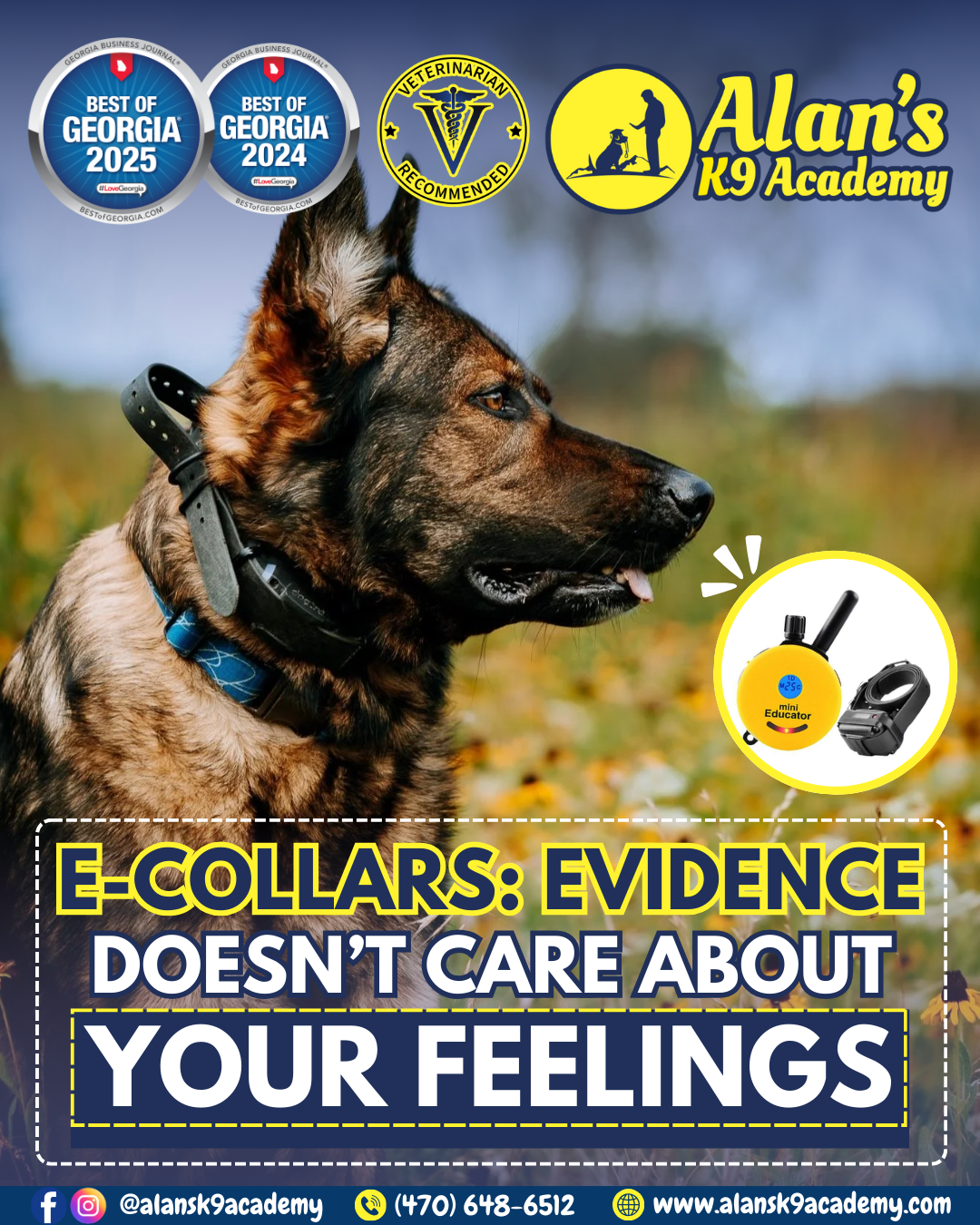Alan's K9 Academy
Read Our Blog

E-Collars: Evidence Doesn’t Care About Your Feelings

.png)
.png)
.png)
.png)
.png)
.png)
.png)
.png)
Alan's K9 Academy


.png)
.png)
.png)
.png)
.png)
.png)
.png)
.png)
Absolutely! Investing in professional training for your furry friend is like giving them the gift of communication. It's not just about obedience; it's about building a deeper bond. Trained dogs are happier, more confident, and safer companions. Plus, it fosters mutual respect and understanding.
We promote positive reinforcement training. We also use a variety of training methods and training aids to achieve the goals of our dog owners and their pets.
Each of our dog training programs is custom-tailored to the specific situation. There are a number of factors that we evaluate prior to building a training package for you, such as your dog's age, temperament, previous training, as well as the desired goals of the dog's parents. Our programs vary in price depending on where your dog is currently, and how long we estimate it will take to reach your goals. The only way we can give an accurate quote is by evaluating your dog. Our signature 6-week program is $2,900, but not every single dog we meet is a great fit.
Alan's K9 Academy offers personalized, in-home dog training, as well as training sessions at our 12 Acre facility in Cartersville. Our 12-acre facility location allows us to train dogs in real-world settings, such as parks, downtown area, pet friendly stores ensuring they learn to stay calm and well-behaved in various environments. Each dog enjoys multiple walks and daily field trips around the neighborhood, promoting socialization and building a calm, neutral demeanor. Our training approach emphasizes desensitization, social skills, and confidence-building for balanced, happy dogs. For our clients, we also provide exclusive boarding at our 12-acre training facility, where dogs can enjoy continued training, playtime, and exercise. Convenient pick-up and drop-off services are available to make the experience stress-free.
Yes, we offer financing through AFFIRM, Klarna, or Lending USA options to our clients. Payment plans can vary as low as $120 a month for up to 3 years.
We take any breed and any age needing obedience training or behavioral issues. Our goal is to assist as many dogs and owners as possible. Aggression and behavioral issues would require a much longer and more intensive program. We are happy to work with any dog needing help with insecurity, anxiety, impulse control, hyperactivity, leash reactivity, dog reactivity, etc. We have decades of experience working with high-drive breeds.
Yes! We also offer therapy dog training and service dog training, though we don't currently advertise them. If this is a need, please contact us with the form for more information. To answer this question, we will start by explaining what a service dog does and how a service dog is different from a therapy dog and an emotional support dog. A service dog, as defined by the Americans with Disabilities Act, is a dog individually trained to perform specific tasks and to work with people with disabilities. The work of a service dog must be directly related to the handler's disability. The ADA mandates that service dogs have full public access rights. Therapy dogs are trained to be comfortable in new environments and to interact with different people. They typically have certain personality traits, and they volunteer in clinical settings such as hospitals, schools, and nursing homes. Therapy dogs do not have the same legal right to access service dogs, and although a dog can be certified as a therapy dog through an organization, there are no uniform state or national rules that regulate the certification. Emotional support dogs are not considered service dogs under the ADA. They may be trained for a specific owner, but they are not trained for specific tasks or duties to aid a person with a disability. ESA owners have only limited legal rights, and those typically require a letter of diagnosis from a doctor or psychiatrist. They have certain access when it comes to housing but do not have unlimited access to public spaces.
Veterinarians wholeheartedly trust and endorse our exceptional dog training services. We have over 75 years of combined experience training dogs to obey. Alan, the owner, holds a master trainer certification. Most dog trainers and stores like Petco and PetSmart just don't have the same level of knowledge and expertise that we do. In fact, one of our clients was referred to us by PetSmart because they couldn't help them! When you work with a higher-quality trainer, you skip many of the struggles that come with hiring someone cheaper, including unintended and negative consequences for your dog's behavior! Our training method builds a rewarding relationship with you and your dog.